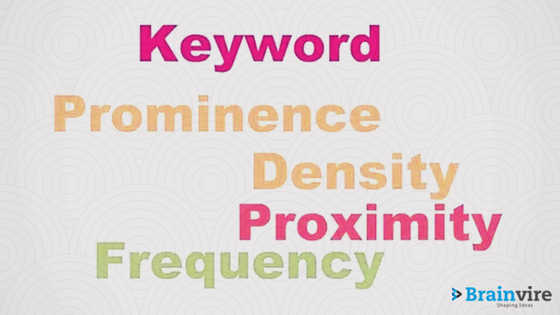So you recently launched a website, huh!
You took all the pains of keyword research and yet are not being favoured by Google.
And still wondering where you made the blunder?
Well, doing mere keyword research and targeting them won’t work, at least not with search engines’ advanced algorithms.
So, placing the keywords is not important but ‘where’ they are placed is IMPORTANT from a search engine’s perspective. It’s a known fact that search engines use their web spiders to crawl through the pages and index them. Needless to say, they look for them at specific ‘locations’ in a logical manner.
In this blog post, we’ll take a look on which are the ‘hotspots’ on your webpage where you can place the keywords to boost your site’s SERPs.
Let’s get started!
Deciding Factors in Keyword Optimization –
Keyword optimization follows keyword research and ultimately comes down (but not limited to) three basic parameters – Keyword Prominence, Keyword Density, and Keyword Proximity.
- Keyword Prominence
This is the first and foremost thing when we talk about keywords’ optimization. It basically refers to how suitably your keywords are placed on a webpage.
Placing keywords at specific spots increase the chances of ranking. These include title tag, heading tags, and meta description.
For example, while designing a page the target keyword should be placed near the body tag. It aids in getting higher prominence.
- Keyword Density
If you were the search engine, how would you feel if a word (keyword) repeats itself, again and again! You would be irritated, right.
So, having an optimal ratio of keywords to the total number of words on your webpage is quite important.
But having said that, search engines have not provided a definite number to stick to. Ideally, 2 to 4% of keywords is recommended.
Keyword stuffing i.e. over use of keywords should be avoided at all times, else it looks as spam to the search engine, and maybe for the visitor too.
- Keyword Proximity
Keywords are of two types – short-tail and long-tail.
Keyword proximity concerns the distance between individual keywords in any sentence on a given webpage. The lesser the distance, the better it is!
It is preferable to have all the individual keywords together.
When designing a webpage or writing content, always keep in mind that you are doing it for your audience, not the search engine! So, a balance between the SEO strategy and quality content should be maintained.
It is always a good option to consult a SEO expert to help you out with your objectives, which will get you closer to your goal.
Related Articles
-
5 Strategies to Increase Your Conversions and ROI with Social Media Advertising
What is the first thing that we do in the morning after waking up? Jump out of the bed, pick our cell phones and start social media surfing. Checking out
-
Boost Your SEO Strategy: Top AI-Powered Keyword Research Tools for 2025
Introduction Effective keyword research is essential for driving organic traffic and optimizing content for search engines. In 2025, AI-powered keyword research tools are becoming increasingly crucial in automating and enhancing
-
The 15 Small Business Hacks: Interesting Marketing Strategies That You Need
Small businesses try to craft and implement profitable marketing strategies. As a small business owner, you would like to execute small business marketing strategies that offer exponential growth to your





